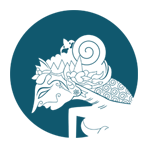Taxonomic Study and Bioprospecting Indonesian Termitomyces eurrhizus
Abstract
Keywords
Full Text:
PDFReferences
Abdul Hussein, S.A., Zaki, N.H., Rasool, K.H. (2023). Biological activities of purified prolidase from pathogenic E. coli. Bionatura. 8(CSS1). doi: 10.21931/RB/CSS/2023.08.01.57.
Alim, Y., Dib-Bellahouel, S., Fortas, Z. (2023). Valorization of a wild saprophytic edible mushroom in western Algeria: Characterization and nutritional value. Mycopath, 20(1).
Aryal, H.P., & Budathoki, U. (2016). Ethnomycology of Termitomyces R. Heim in Nepal. Journal of Yeast and Fungal Research, 7(4), 28-38. https://doi.org/10.5897/JYFR2015.0154
Augustinus, F., Putra, I.P. (2021). Termitomyces di kawasan urban kecamatan Gunungpati, Kota Semarang, Jawa Tengah. Bul. Plasma Nutfah, 27, 101-112.
Gunasekara, N. W., Nanayakkara, C. M., Karunarathna, S. C., Wijesundera, R.L.C. (2021). Nutritional aspects of three termitomyces and four other wild edible mushroom species from sri lanka. Chiang Mai J. Sci. 48(5):1236–1246.
Izhar, A., Khalid, A. N., Bashir, H. (2020). Termitomyces sheikhupurensis sp. nov.(Lyophyllaceae, Agaricales) from Pakistan, evidence from morphology and DNA sequences data. Turkish J. of Bot, 44(6),694-704. doi:10.3906/bot-2003-51.
Karun, N. C., Sridhar, K. R. (2013). Occurrence and distribution of Termitomyces (Basidiomycota, Agaricales ) in the Western Ghats and on the west coast of India. Czech Mycol. 65(2):233–254.doi:10.33585/cmy.65207.
Khastini, R. O., Maryani, N., Sari, I. J., Lestari, I.D., Putri, C.F. (2022). DIVERSITY OF WILD EDIBLE MUSHROOM IN GUNUNG TUKUNG GEDE NATURE RESERVES, INDONESIA. Bangladesh J of Bot, 51(3), 625-629.
Koné, N., Yéo, K., Konaté, S., Linsenmair, K. (2013). Socio-economical aspects of the exploitation of Termitomyces fruit bodies in central and southern Côte d’Ivoire: Raising awareness for their sustainable use. J. Appl. Biosci. 70(1): 5580. doi:10.4314/jab.v70i1.98759.
Kumar, D., & Sagar, A. (2019). Taxonomic details, antibacterial and antioxidant activities of Termitomyces eurhizus (berk) r. Heim from district Kangra, Himachal Pradesh. Bulletin of Pure and Applied Sciences. Vol.38 B (Botany), No.1: P.34-48
Liu, J., Wang, Y., Wu, J., Georgiev, M. I., Xu, B., Wong, K. H., Bai, W., Tian, L. (2021). Isolation, structural properties, and bioactivities of polysaccharides from mushrooms Termitomyces: a review. Journal of Agricultural and Food Chemistry, 70(1), pp.21-33. https://doi.org/10.1021/acs.jafc.1c06443
Manna, S., Ray, D., & Roy, A. (2014). Tribal relation to spatio-temporal variation of wild mushrooms in eastern lateritic part of India. Ethnobotany Research and Applications, 12, 015-024.
Mossebo, D. C., Essouman, E. P. F., Machouart, M. C., Gueidan, C. (2017). Phylogenetic relationships, taxonomic revision and new taxa of termitomyces (Lyophyllaceae, basidiomycota) inferred from combined nLSU- and mtSSU-rDNA sequences. Phytotaxa. 321(1):71–102.doi:10.11646/phytotaxa.321.1.3.
Paloi, S., Kumla, J., Paloi, B.P., Srinuanpan, S., Hoijang, S., Karunarathna, S. C., Acharya, K., Suwannarach N. and Lumyong S. (2023). Termite mushrooms (termitomyces), a potential source of nutrients and bioactive compounds exhibiting human health benefits: a review. Journal of Fungi, 9(1), p.112. https://doi.org/10.3390/jof9010112
Pegler, D. N., Vanhaecke, M. (1994). Termitomyces of Southeast Asia. Kew Bull. 49(4):717.doi:10.2307/4118066.
Putra, I. P., Amelya, M. P., Nugraha, N. H., Zamia, H. Z. (2020). Notes of Some Macroscopic Fungi at IPB University Campus Forest: Diversity and Potency. Biota. 12(2):57.
Sachan, S. K. S., Patra, J. K., & Thatoi, H. N. (2013). Indigenous knowledge of ethnic tribes for utilization of wild mushrooms as food and medicine in similipal biosphere reserve, Odisha, India. Journal of Agricultural Technology. Vol. 9(2): 403-416
Santhosh, C. R., Mahadevakumar, S., Nuthan, B. R., Sridhar, K. R., Satish, S. (2023). Nutritional Attributes of the Wild Edible Mushrooms in Southern India. Ethn. Knowl. Perspect. Med. Plants Vol. 2 Nutr. Diet. Benefits. 2:351–381. doi:10.1201/9781003353089-17.
Sathiya Seelan, J. S., Shu Yee, C., She Fui, F., Dawood, M., Tan, Y. S., Kim, M. J., Park, M. S., Lim, Y.W. (2020). New Species of Termitomyces (Lyophyllaceae, Basidiomycota) from Sabah (Northern Borneo), Malaysia. Mycobiology. 48(2):95–103.doi:10.1080/12298093.2020.1738743.
Srikram, A., Supapvanich, S. (2016). Proximate compositions and bioactive compounds of edible wild and cultivated mushrooms from Northeast Thailand. Agric. Nat. Resour. 50(6):432–436. doi:10.1016/j.anres.2016.08.001.
Tang, S. M., He, M. Q., Raspé, O., Luo, X., Zhang, X. L., Li, Y. J,, Su, K. M., Li, S. H., Thongklang, N., Hyde, K. D. (2020). Two new species of termitomyces (Agaricales, lyophyllaceae) from China and Thailand. Phytotaxa. 439(3):231–242.doi:10.11646/PHYTOTAXA.439.3.5.
Tibuhwa, D. D, Kivaisi, A. K., Magingo, F.S.S. (2010). Utility of the macro-micromorphological characteristics used in classifying the species of Termitomyces. Tanzania Journal of Science, 36.
Watling, Roy. (2013). Identification of the Large Fungi. Endinburgh: Pitman Press.
Ye, L., Karunarathna, S. C., Li, H., Xu, J., Hyde, K. D., Mortimer, P. E. (2019). A survey of Termitomyces (Lyophyllaceae, Agaricales), including a new species, from a subtropical forest in Xishuangbanna, China. Mycobiology, 47(4), 391-400. doi:10.1080/12298093.2019.1682449.
Yusran, Y., Erniwati, E., Wahyuni, D., Ramadhanil, R., Khumaidi, A. (2021). Diversity of macro fungus across three altitudinal ranges in Lore Lindu national park, central Sulawesi, Indonesia and their utilization by local residents. Biodiversitas. 22(1):199–210.doi:10.13057/biodiv/d220126.
Zhao, J., Hu, Y., Qian., C., Hussain, M., Liu, S., Zhang, A., He, R., Sun, P. (2023). The Interaction between Mushroom Polysaccharides and Gut Microbiota and Their Effect on Human Health: A Review. Biology (Basel). 12(1):1–29.doi:10.3390/biology120.
DOI: https://doi.org/10.14421/biomedich.2025.141.289-297
Refbacks
- There are currently no refbacks.
Copyright (c) 2025 Siti Maulyda Ayu, Wahyu Aji Mahardhika, Ivan Permana Putra, Oktan Dwi Nurhayat
Biology, Medicine, & Natural Product Chemistry |




